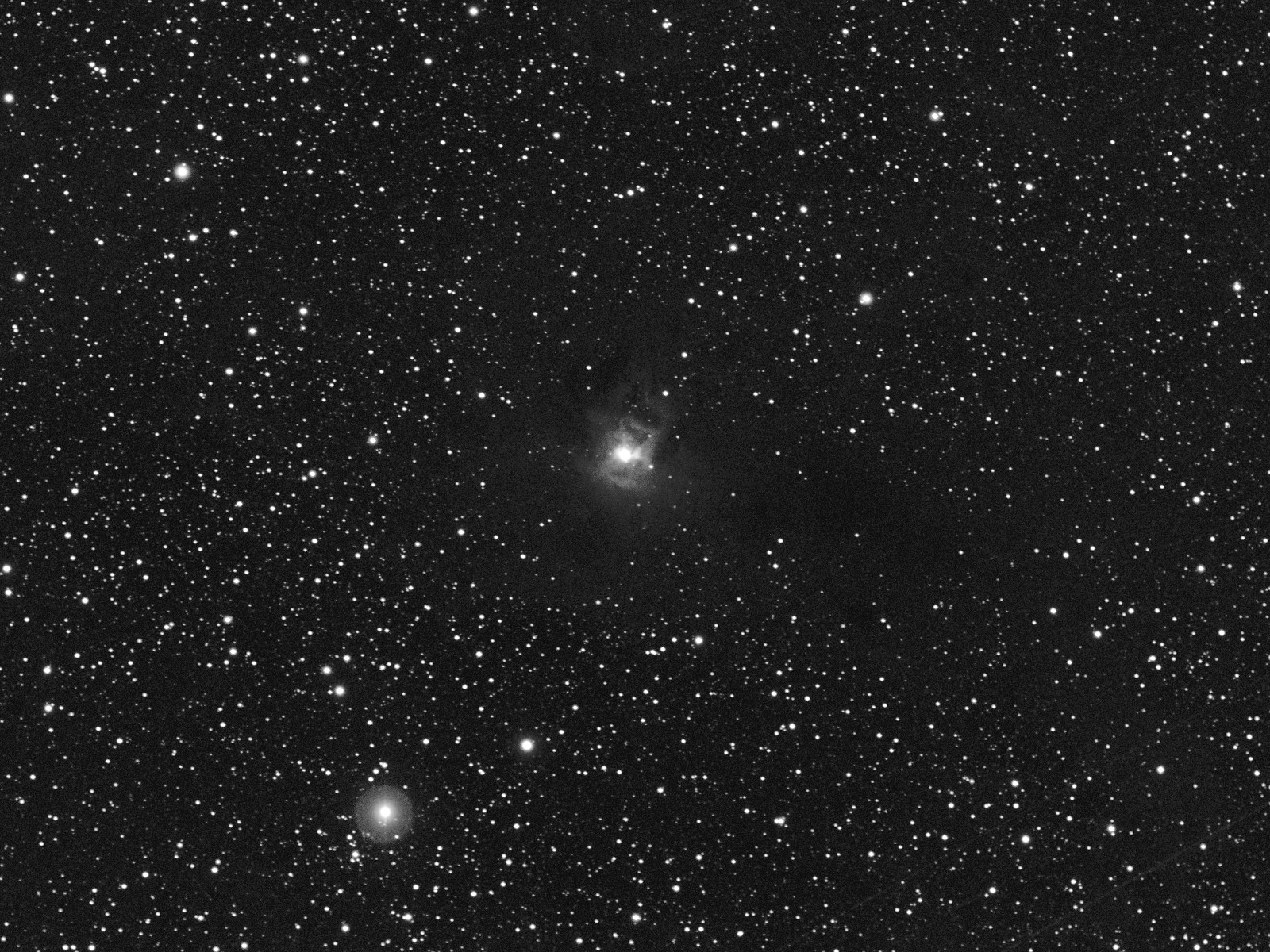The Iris Nebula, NGC 7023
Constructed from about 15 images. The Iris Nebula appears to be an enormous cloud of dark dust, partially illuminated by the bright star in the center. A messy, dirty explosion of some kind… The “artifact” is the star in the lower left — I don’t know why it alone is surrounded by a perfectly circular halo. I think it is T Cephei.
(The Wikipedia article on T Cephei, incidentally, has an absolutely stunning huge image of the region around NGC 7023 — well worth staring at for a while.)
Here’s a second image, with more data and further processing. The artifact was still there, but I cropped it out to expand the nebula:
This image is a stack of 34 frames — several hours total exposure time. A little robotic telescope mindlessly doing its thing…
Wildfires are raging a couple hundred miles to the Northeast. That thought keeps intruding. COVID-19 is sneaking around, touching people, and killing some of them. I think about that too. 1300 light years away, six light years across. About half the diameter of the moon…

























